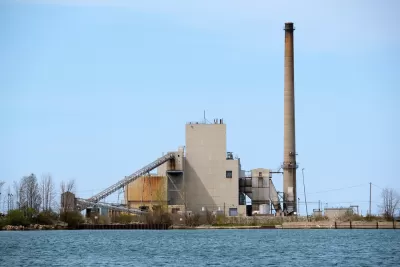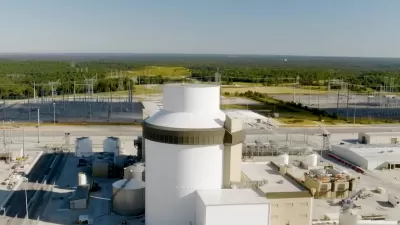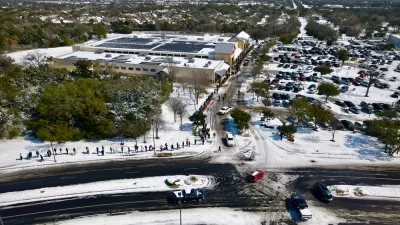Water is an important part of the thermal energy process – one that we may not think as much about.

Akshat Rathi examines the role of water in thermal electricity generation, where it is used to condense cooled steam after the stream turns turbines. "In the US and Europe, more than half of the water drawn from nature is used for power generation. This year’s heatwave has forced some of those power plants to shut down," reports Rathi.
The amount of water used varies widely among types of thermal power plants. For example, the cooling towers of a nuclear power plant use over 1,100 gallons of water to produce a mega-watt hour of electricity while a geothermal power plant uses only 15 gallons. Rathi notes that this water goes back into the environment, but there is still a risk of the water temperature affecting plants and wildlife.
Hydropower, wind, and solar—non-thermal ways to generate energy—do not use water for cooling. However, hydropower uses large amounts of water for energy production. As a result, says Rathi, wind and solar power are the best bets for cutting both fuel and water use.
FULL STORY: You probably have no idea just how much water is needed to produce electricity

Montreal Mall to Become 6,000 Housing Units
Place Versailles will be transformed into a mixed-use complex over the next 25 years.

Planetizen Federal Action Tracker
A weekly monitor of how Trump’s orders and actions are impacting planners and planning in America.

DARTSpace Platform Streamlines Dallas TOD Application Process
The Dallas transit agency hopes a shorter permitting timeline will boost transit-oriented development around rail stations.

Interactive Map Reveals America's “Shade Deserts”
Launched by UCLA and American Forests to combat heat-related deaths, the tool maps the shade infrastructure for over 360 U.S. cities.

Bicycles and Books — In Sacramento, Libraries Now Offer Both
Adult library card holders can check out e-bikes and e-trikes for up to one week.

Colorado Landfills Emit as Much Pollution as 1M Cars
Landfills are the third-largest source of methane pollution in Colorado, after agriculture and fossil fuel extraction.
Urban Design for Planners 1: Software Tools
This six-course series explores essential urban design concepts using open source software and equips planners with the tools they need to participate fully in the urban design process.
Planning for Universal Design
Learn the tools for implementing Universal Design in planning regulations.
City of Mt Shasta
City of Camden Redevelopment Agency
City of Astoria
Transportation Research & Education Center (TREC) at Portland State University
City of Camden Redevelopment Agency
Municipality of Princeton (NJ)
Regional Transportation Commission of Southern Nevada




























